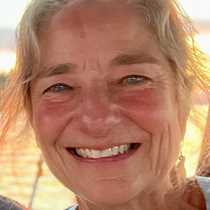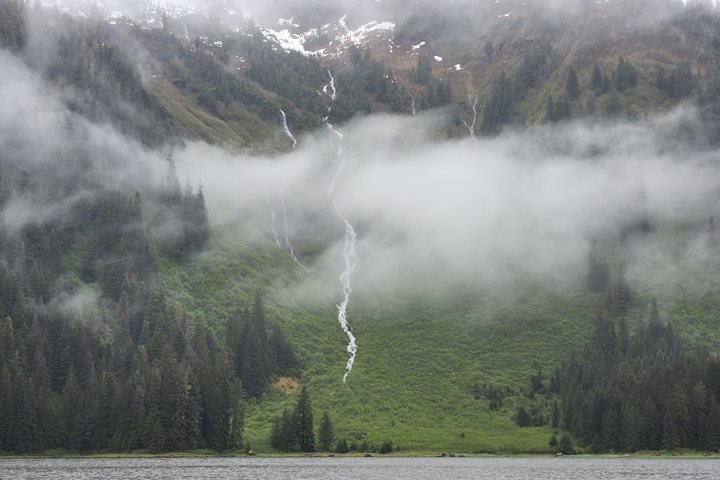Southeast Alaska’s coastal temperate rain forests are multi-layered, mossy, moist, rich habitats. Nearly all surfaces are covered with something that is alive. This morning we explored the rain forest at Ideal Cove. Next to the boardwalk, skunk cabbage grows to enormous size, and trees have cavernous holes beneath them, where old ‘nurse logs’ have rotted away. While we walked the winter wren sang its long, complex song, but mostly we heard raindrops on leaves, small streams trickling under the boardwalk, and the fast-moving water in the nearby river. Our walk was a feast for our eyes and ears.
When we returned to the ship, our National Geographic expert Birgit Buhleier spoke with us about the development and usage of the Crittercam. By attaching video recorders directly to animals, a tremendous amount has been learned about their behavior—from housecats to humpback whales and emperor penguins.
When we approached Petersburg, the first locals we saw were Steller sea lions—resting on a navigational buoy. Walking in this small Norwegian fishing town was pleasant and full of discoveries: houses built on stilts alongside tidal inlets, sidewalk stepping stones in the shape of halibut, Norwegian flags in front of the Sons of Norway Hall. We walked the docks to look at commercial fishing boats, and looked into the water to see invertebrates living on the sides of the docks. While some people were flight-seeing over Le Conte glacier, others visited an Alaskan bog, where unusual and slow-growing plants survive.
Dinner was a feast of fresh, local Dungeness crab. As Steve Maclean gave an interesting presentation about Alaskan forest ecology, the ship moved into Frederick Sound. As daylight faded, we watched several humpback whales and listened to them breathe.







